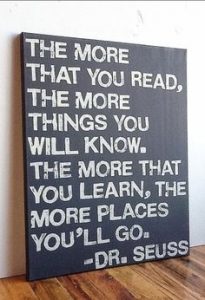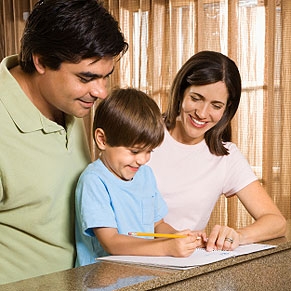Children need to be encouraged to develop a love of reading and what better way than setting up a cosy area in your home or classroom as a reading nook.
In this last blog of the “reading series” we share 5 inspiring ideas that will have children wanting to curl up with a book in no time. All these ideas are simple, inexpensive and easy to recreate in the home or classroom.
If you have missed the first two blogs of the “reading series” please click on the links below to catch up on what you have missed.
Reading Strategies to teach children 4- 9 year olds
Concepts about Print – 22 concepts that all parents and teachers need to know
Use a tent
A tent inspires children to be transported into an imaginary world that is separate from their daily routine. You can decorate it how you wish and it is easy to set up in any space. There are many tents for sale in shops at the moment or some creative people might find a pattern online and create their own. Fill the tent with cushions and blankets and have the children’s reading books close by.
Using book shelves
Using book display shelves is a great way of storing even the largest of book collections. It is easy for a child to see which book they want and an effective way of keeping all the books in a neat way on the wall. Rotate the books continually so children have new books to select from. Book display shelves are inexpensive and can be bought from many shops including IKEA. This would work really well in a child’s bedroom, a play room or on a wall inside the classroom.
Create a space within a space
Children love to feel like they have found a secret room so why not create one at home or in the classroom. A secret room can be made with curtains, bunting or any other material lying around. Display books in the secret space with comfortable seating that children really want to sit in. Involve the child in putting the room together and have books on a rotating system.
Reading bench
Using an old bookshelf, turn it on the side and buy some foam to go on top of it. Buy some material to go over the foam and put some cushions on it. You may also have an old mattress (like a cot mattress) that you could use instead. If you prefer the reading bench to be off the floor screw in some legs at the bottom of the shelf. Put the collection of books on the shelves underneath. If you attach wheels to the bottom it will become a movable reading bench.
Choose a theme
Use your child’s interest to create a unique spot for them to read. There are so many free printable templates online that you can use to create a great reading nook with any theme. This would also work well in a classroom as it can relate to the theme that the class is studying. You can incorporate reading tubs or reading shelves nearby to hold the book collection.
This concludes our reading series blogs. Hopefully you have been inspired to create your own reading nook in your home or classroom. We will be starting a new Mathematics series of blogs soon so stay tuned.
If you would like to read some more blogs from this author please click on the links below.
20 ways to help your child learn their sight words
Literacy in the Primary classroom: Lower Case Letter formation
20 ways to help your child learn their sounds
Until next time …
Kelly Pisani






